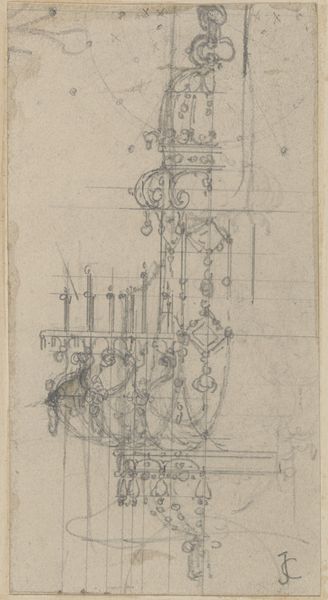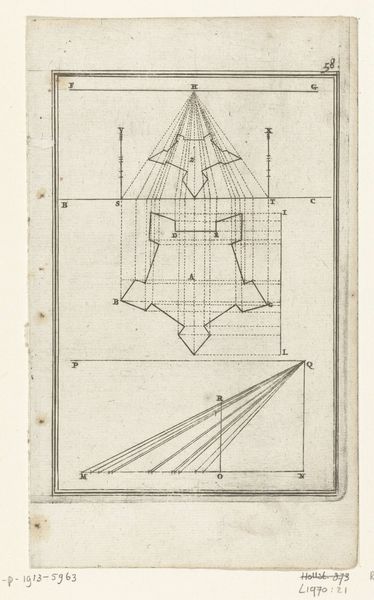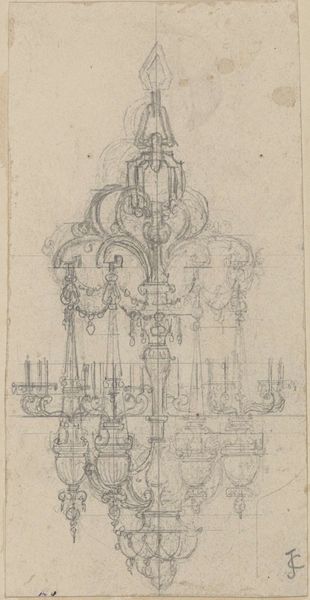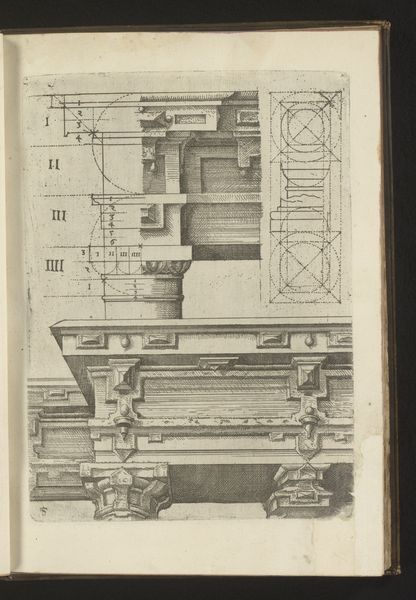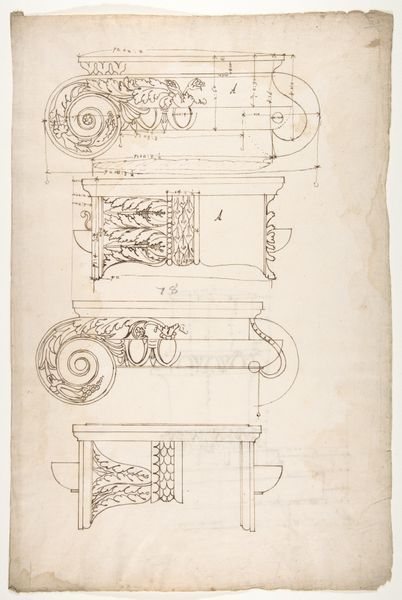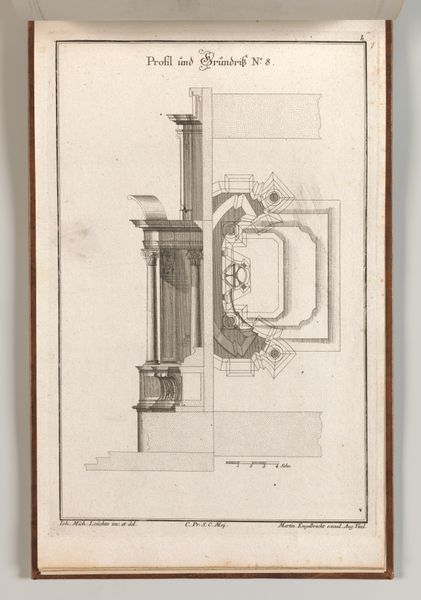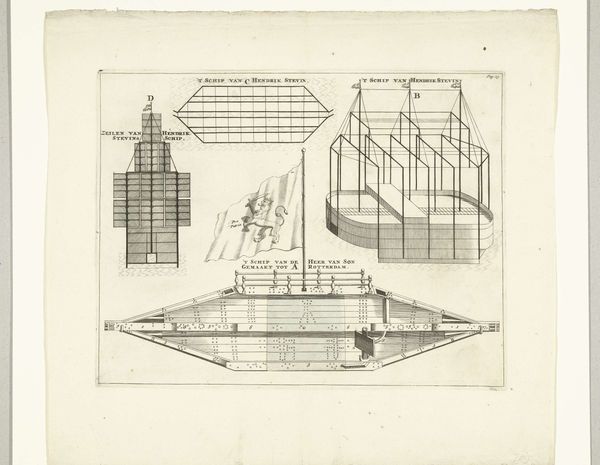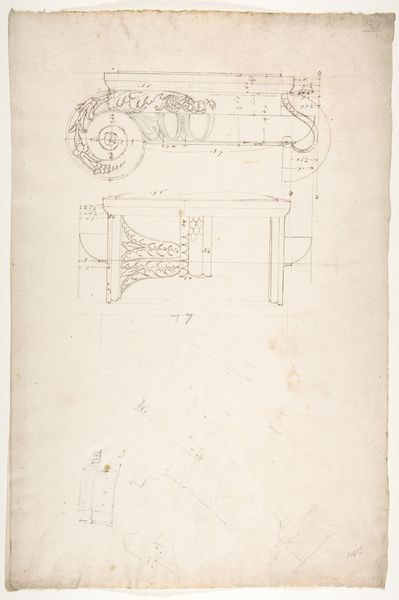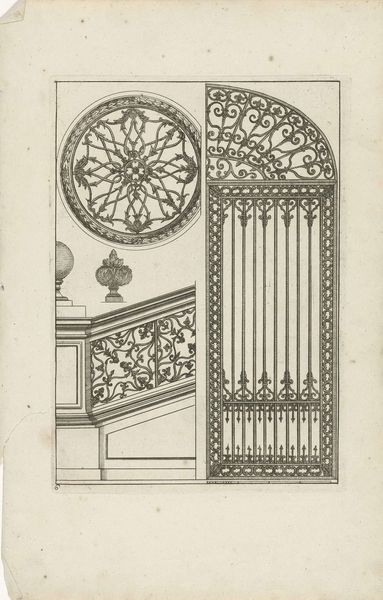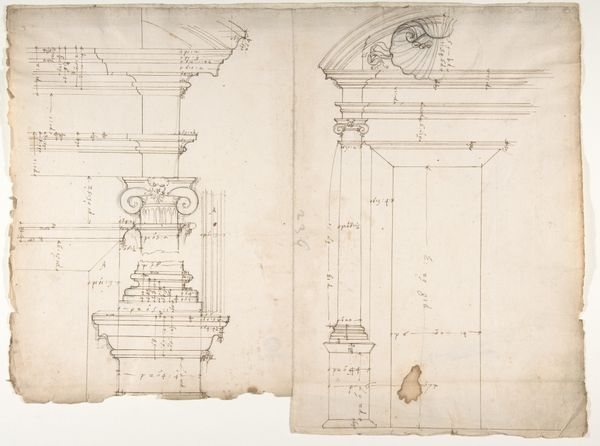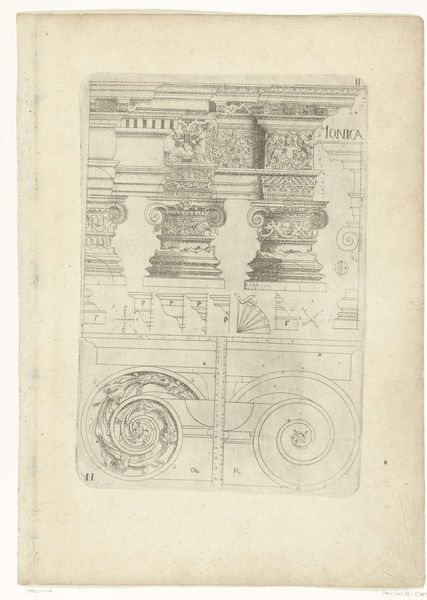
drawing, paper, ink, architecture
#
drawing
#
baroque
#
classical-realism
#
paper
#
form
#
ink
#
line
#
architecture
Dimensions: height 278 mm, width 187 mm
Copyright: Rijks Museum: Open Domain
Curator: Before us is "Verschillende zuilenorden", or "Different Column Orders", a drawing by Gabriel Kramer from around 1610, rendered in ink on paper. It’s a fascinating depiction of classical architectural elements. Editor: It feels austere, doesn't it? Very precise and functional. Not the sort of art that screams emotion, but something almost technical in its execution. I wonder about the type of ink. Curator: It’s intriguing because, despite its function as a sort of technical study, it reveals so much about the enduring power of these classical forms and their associated cultural baggage. Those columns aren’t just structural supports; they're loaded with symbolic meaning accrued over centuries. Editor: Indeed. Look at the Corinthian example. The acanthus leaves recall vegetal abundance and opulence. We have a cultural memory imbued into each stroke. And consider the careful gradation and labor into presenting the proportional scheme next to the pillar – not just an art piece, it might have been circulated within an architect's workshop for practical purposes. How interesting, really. Curator: Precisely! It reminds us of the architectural treatises circulating at the time. This wasn't merely about aesthetic beauty; it was about power, order, and civilization, ideas deeply embedded in the visual language of these architectural forms. And let's not forget the importance of patronage. Who commissioned or bought these drawings, and what message were they trying to project through their architectural choices? Editor: You make a strong case, and I suppose my materialism might read the bare paper in ways to see it as an affordable, utilitarian medium. Yet the baroque details, in spite of everything, exude this quality and history. I also keep thinking of the consumption aspect - this kind of knowledge had its own economy. It shows how art becomes intertwined with labor, economics, social class, all these structures which reflect larger paradigms of culture that echo through these emblems of status, these symbols. Curator: I'm glad you see that it is through images that meaning propagates itself and through their presence in various cultural and historical settings. It highlights the architectural world from a bird's eye view. Editor: Well, analyzing the visual record and the social history does expand our horizons!
Comments
No comments
Be the first to comment and join the conversation on the ultimate creative platform.
